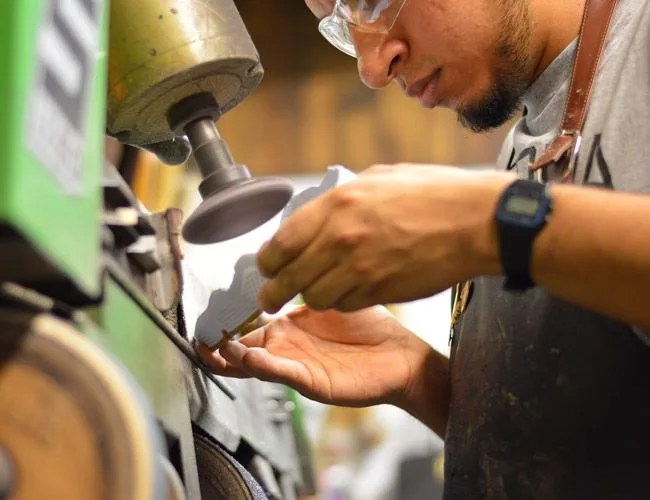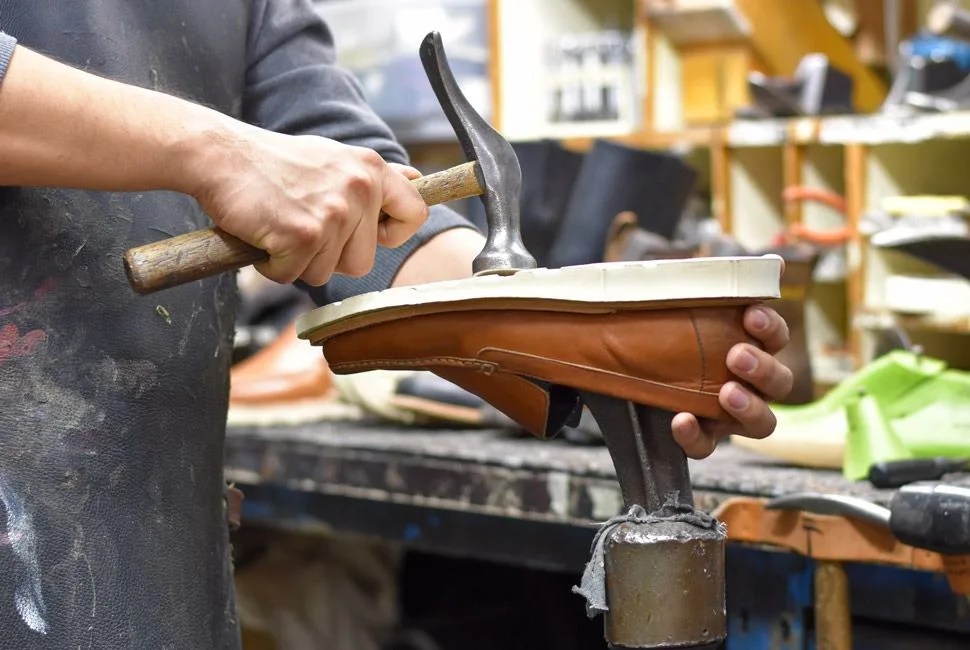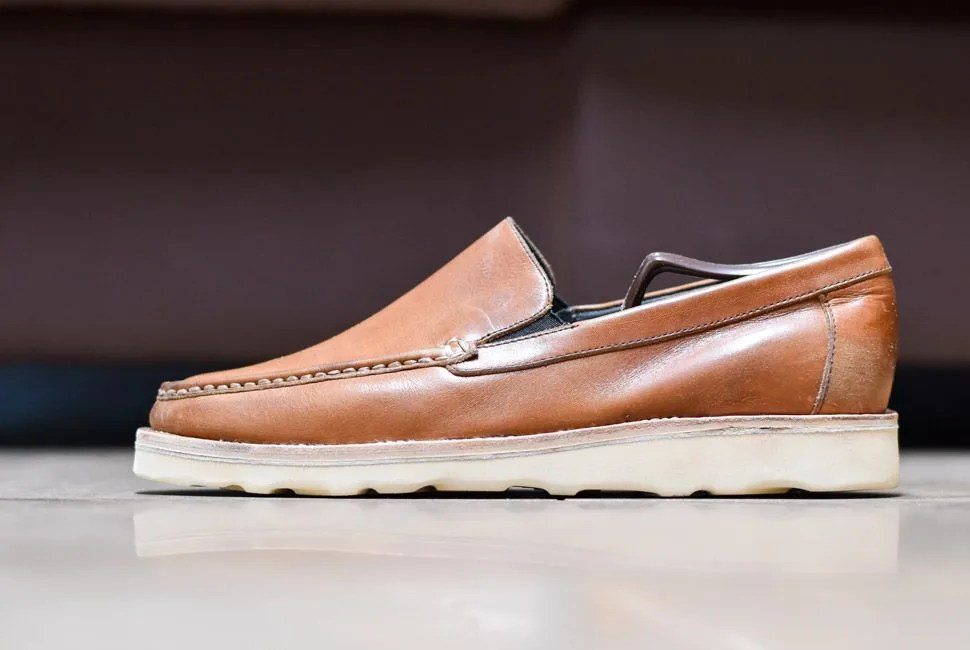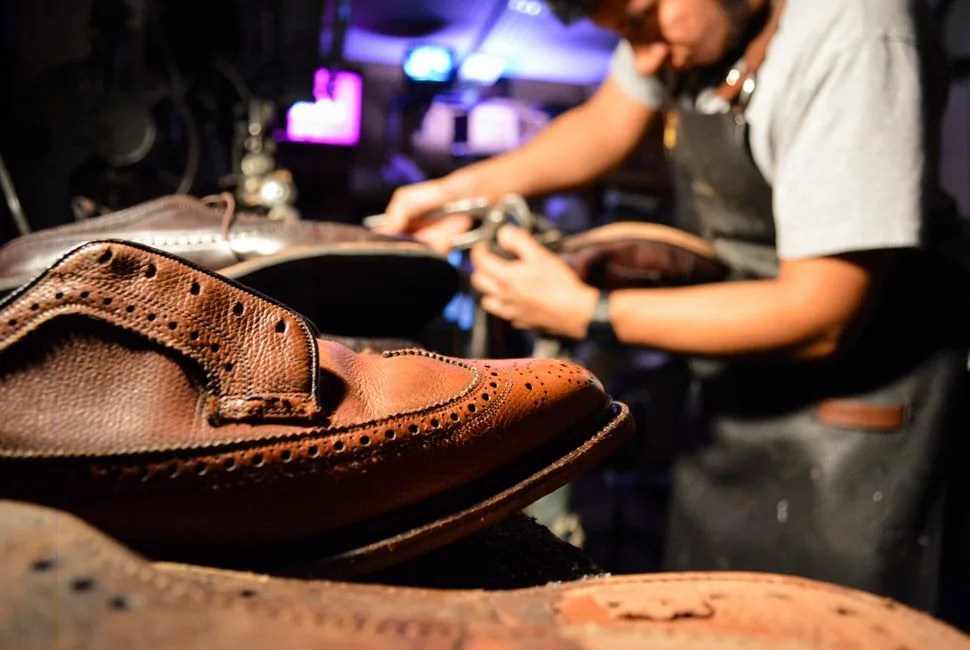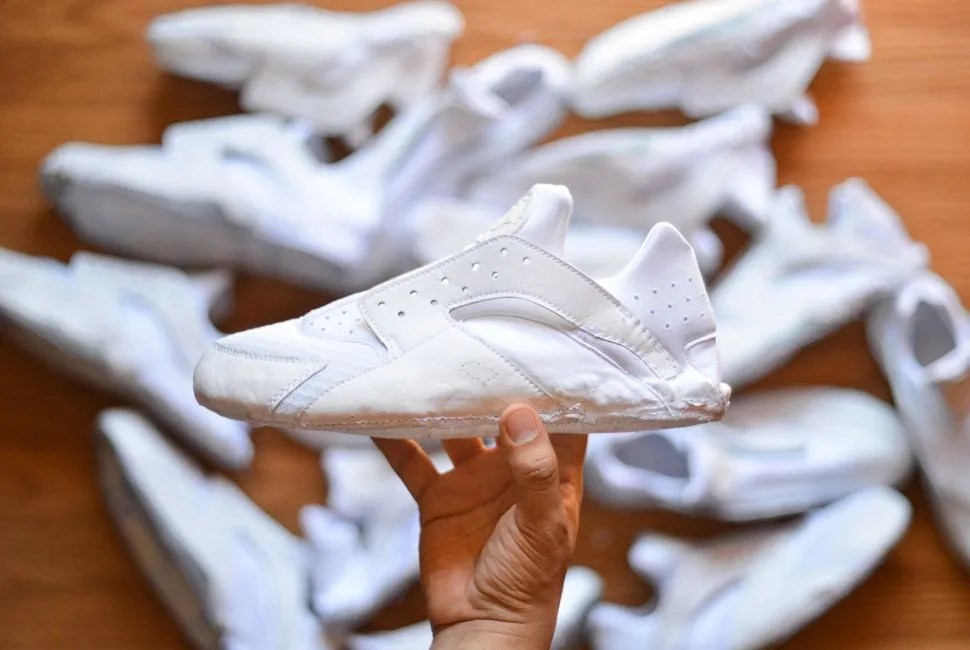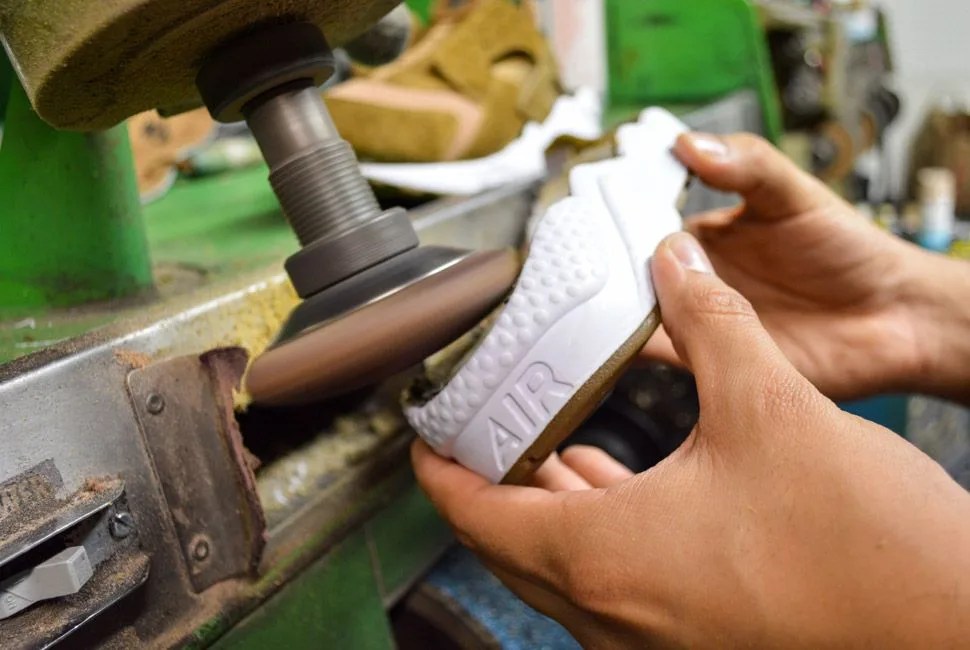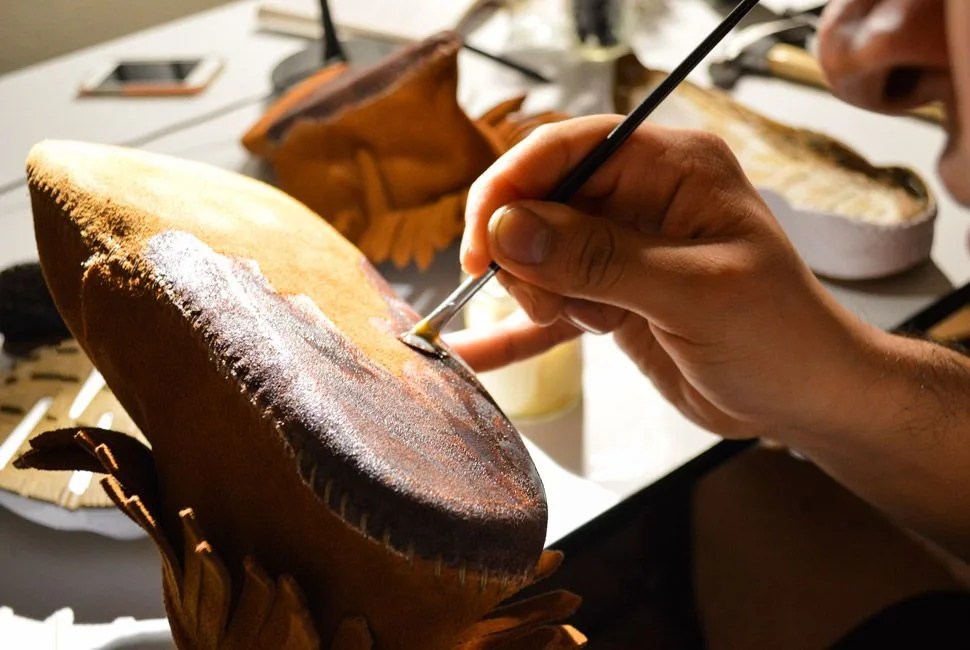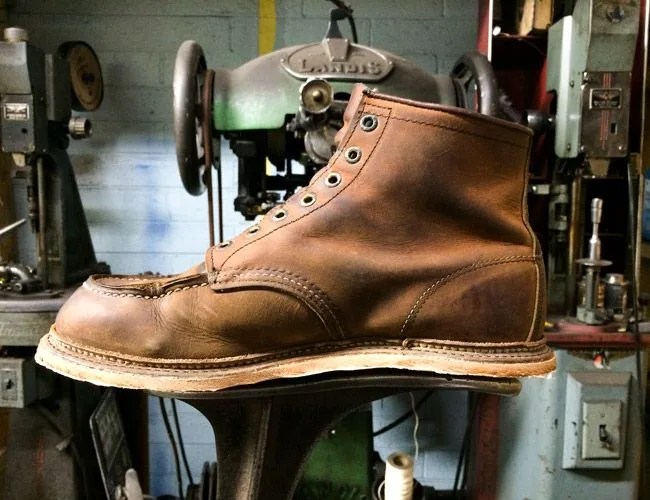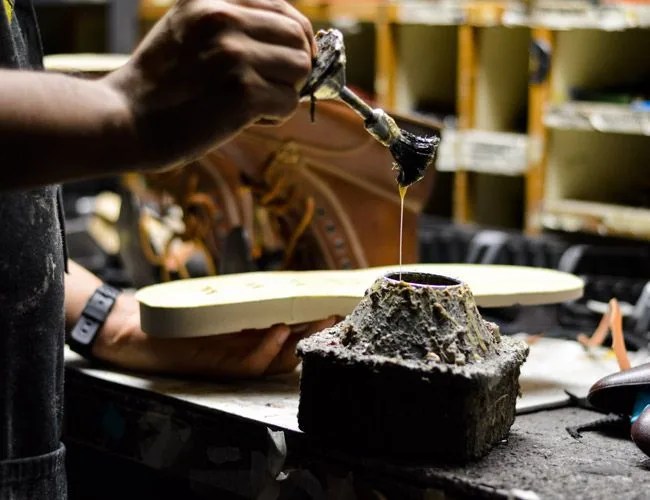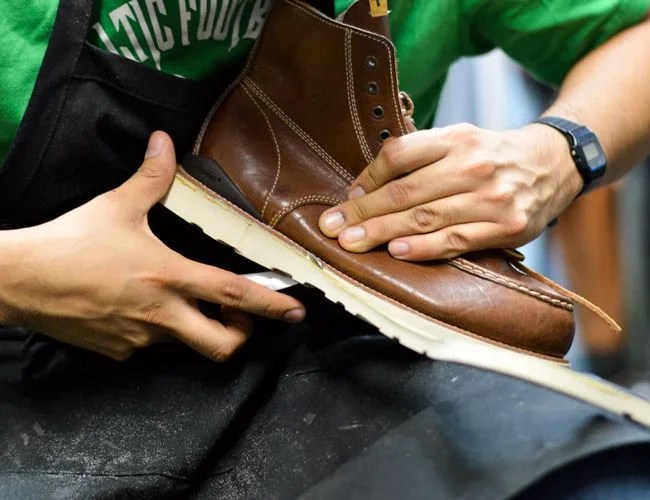7 photos
“It wasn’t until I started combining sneakers with dress shoes that a lot of people started taking an interest in me,” says Randy Lucas, also known as Randy the Cobbler. He’s a third-generation cobbler whose family owns Broadway Shoe Repair in Tempe, Arizona, a traditional shoe repair shop by day and a custom cobbling shop where Lucas makes his own streetwear-inspired hybrids by night. And through the latter business, he’s cultivated quite the following.
For the last 55 years, his family has owned Broadway Shoe Repair, and Lucas himself has worked there for the last 14. He learned how to shine shoes, repair rips and change heels and soles from the shop’s previous owner, Jesse Martinez, whom Lucas considers to be his grandfather (his paternal grandparents live in Guatemala). As Martinez grew older, Lucas took the more fashion-forward, customizable projects that his teacher wasn’t interested in. When Martinez retired, the shop was passed on to Lucas when he turned 18, who ran it for years runs until his biological father took over after retiring from his other job working at Honeywell. Today, Lucas’s father still does most of the traditional shoe repair at the shop, which has has freed up Lucas to grow “Randy the Cobbler”.
“It’s just like the sneaker scene: You always see that they bring out really cool new designs, but they always go back to the classics.”
The name “Randy the Cobbler” is sort of an alter ego for Lucas, which has grown out of his passion for combining dress shoe uppers with unique one of a kind soles, such as Vibram. Before 2013, Randy the Cobbler was Lucas’s side project, repurposing the beat-up shoes that he found at Goodwill stores. His girlfriend (now fiancée) then saw his creations and encouraged him to create an Instagram account, which he named “Randy the Cobbler”. The photos that he posts are process shots of the shoes being made, but they’ve also become a marketing tool for him to reach new customers.
Broadway Shoe Repair and Randy the Cobbler are run out of the same 1,200-square-foot shop. Both are family run, by Lucas, his father, mother, brother and sister. They work with the same machinery that they’ve been using for decades: two sanders, two table stitchers and two patchers, which were built between 1930 and 1980. “A lot of the equiptment we work with is older because it’s hard to replace,” says Lucas. “But they are strong and still work really well. They don’t make machines like that anymore.”
Both businesses are busy. Locals come in for the traditional shoe repair while orders for Randy the Cobbler come from all over the country. Lucas’s popularity has grown organically over the years, one customer at a time, through word of mouth or discovered on Instagram. When taking on new clients, Lucas asks what they’ll use them for, what style they want, if they want their shoes to “shout out” or have “a simple clean design”, and other basic questions about how they dress. In this way, Lucas says he can create a shoe that fits a person’s specific style. Of these clients, Lucas says that about 75 percent ask for him to make the design. The rest know exactly what they want.
